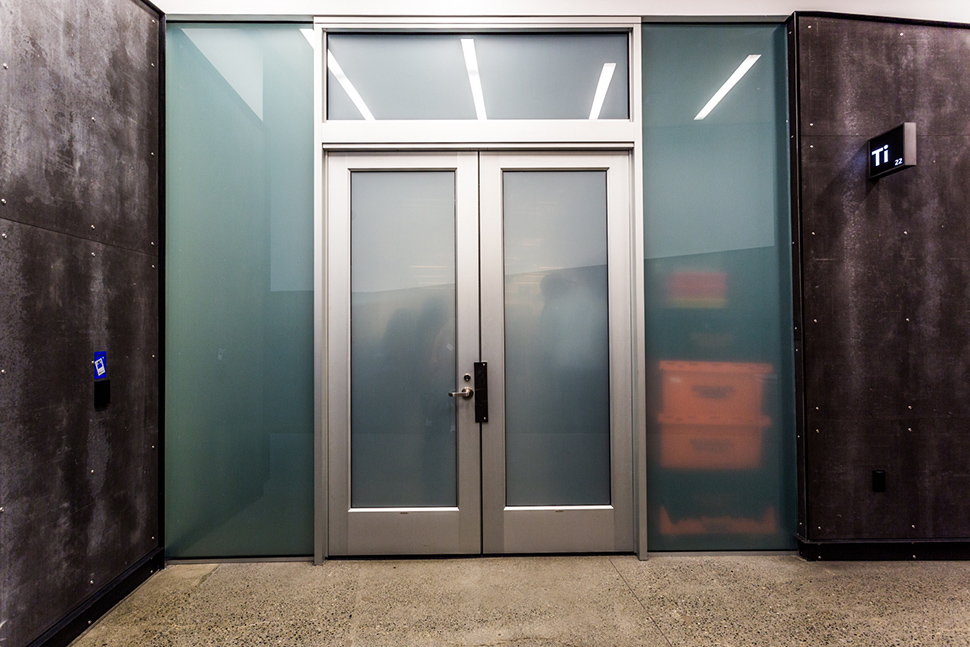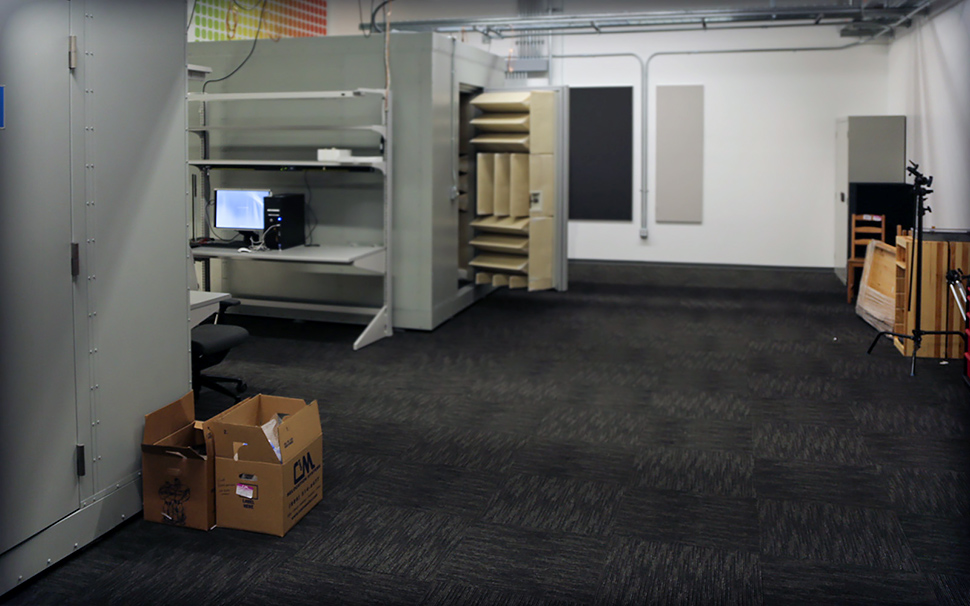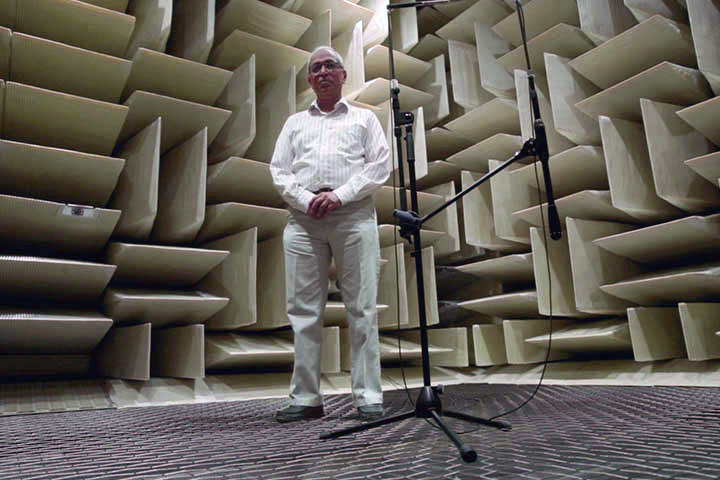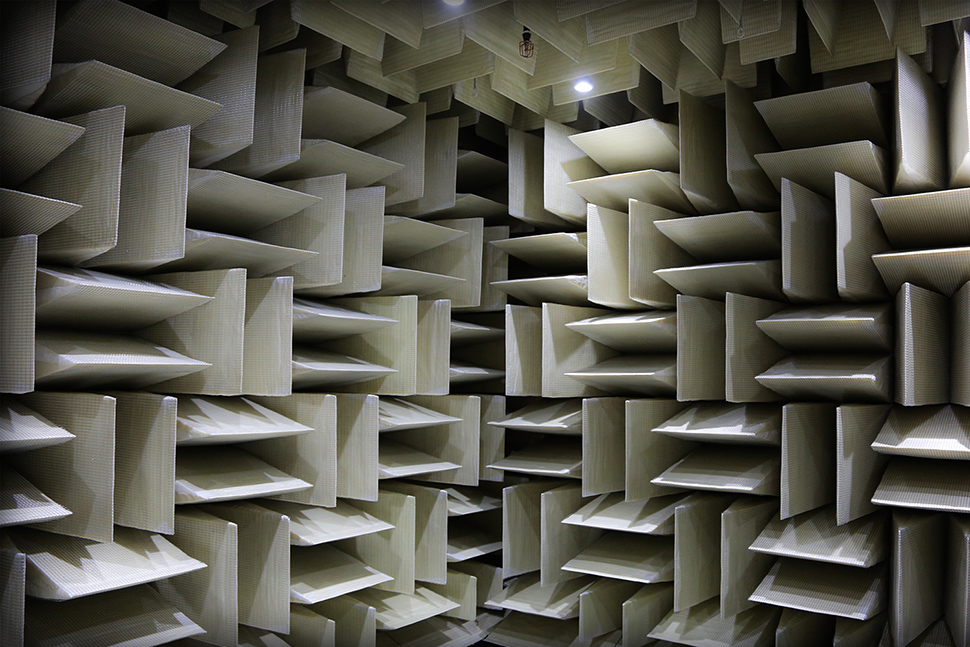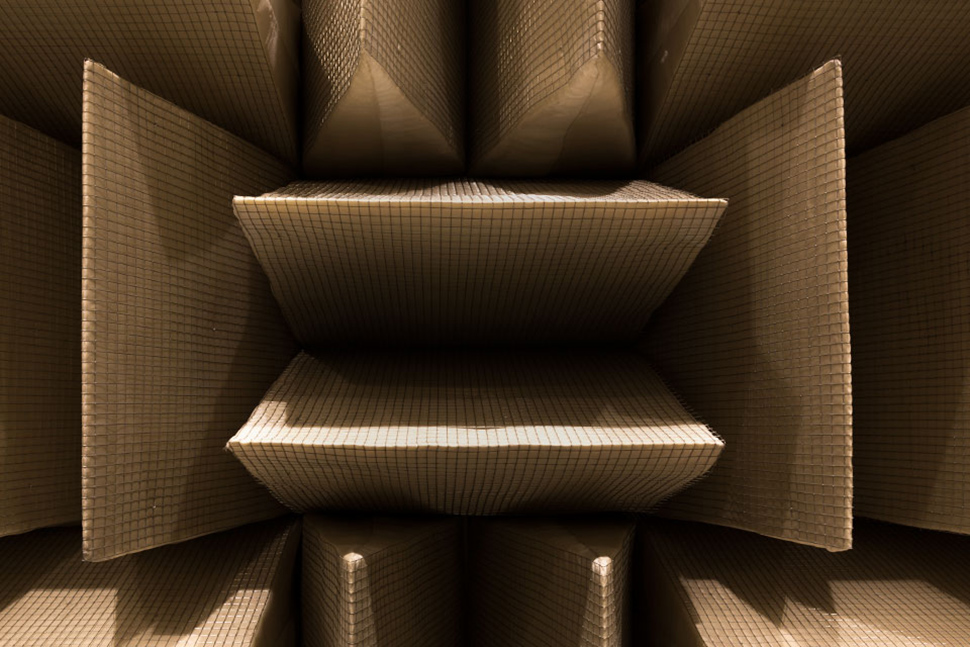Ultimate Ears’ marvel of a creation — under the best of conditions — gets down to zero decibels (dB) in the wee small hours of the morning, when it’s suburban location and a lack of traffic allow it to reach its full potential of silence. But the wizardry that is the anechoic chamber inside Microsoft’s Audio Lab has got it beat.
As reported by Business Wire, Microsoft’s audio lab is able to reach a mind-bending -20.6 dB. How is less than zero possible? Since decibels measure a reference point on a logarithmic scale, zero does not actually represent absolute silence as you might think. Rather, zero decibels simply refers to the lowest level of sound a human can detect. In reality, total silence is much further away, and Microsoft has gotten closer to it than anyone else on record.
Measurements inside the Redmond compound’s new digs register just a couple of decibels above the quietest point physically possible to be reached on our little blue planet, set theoretically at -23 dB, which takes into account only the sound created by air molecules as they interact with one another. The only way to get quieter than that is to do a 2001-style unassisted jump into the vacuum of space.
According to the report, the room was created for Microsoft by Eckel laboratories, which also helped to build the chamber that held the previous record of -13 dBs, located at Orfield Labs in Minneapolis, MN.
Even in Orfeild’s comparatively “noisy” hall, that kind of silence is hard for humans to deal with, acting almost like a torture chamber of sorts after prolonged exposure.
“We challenge people to sit in the chamber in the dark,” Steve Orfield, founder of Orfield Labs, told Hearing Aid Know. “One person stayed in there for 45 minutes. When it’s quiet, ears will adapt. The quieter the room, the more things you hear. You’ll hear your heart beating, sometimes you can hear your lungs, hear your stomach gurgling loudly. In the anechoic chamber, you become the sound.”
“You take away the perceptual cues that allow you to balance and maneuver. If you’re in there for half an hour, you have to be in a chair,” Orfield told the Daily Mail.
So, apart from rubbing it in the face of Orfield Labs as the new record holder, why would Microsoft need a room so utterly devoid of sound? To get the jump on Apple and other top device makers, of course.
“This chamber gives us the opportunity to look for those really small signals that can have an impact to the end user,” said LeSalle Munroe, Microsoft Senior Engineer, Surface Devices to Business Wire. “We always want to have the best tools available for the job. And that’s what this is. It’s a great accomplishment.”
Logitech’s Ultimate Ears brand has used its chamber to help create some of our favorite Bluetooth speakers on the market. With its new digs, which move strikingly close to the quietest point physically achievable by humans on this planet, what will Microsoft come up with next? We’ll just have to wait and find out.
